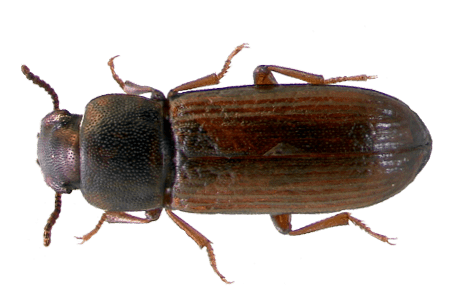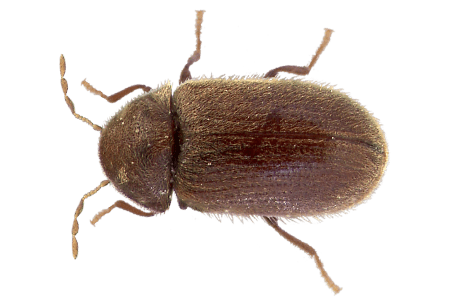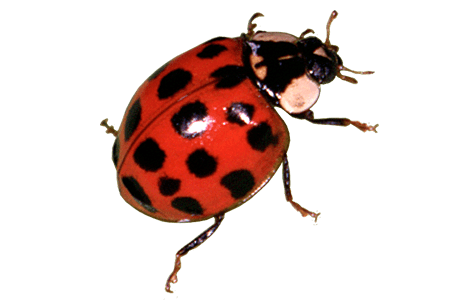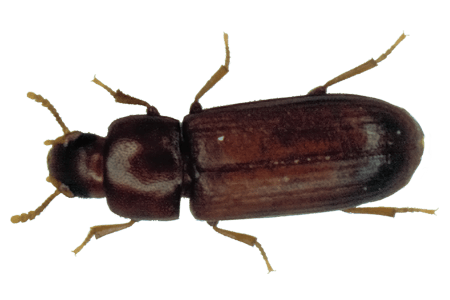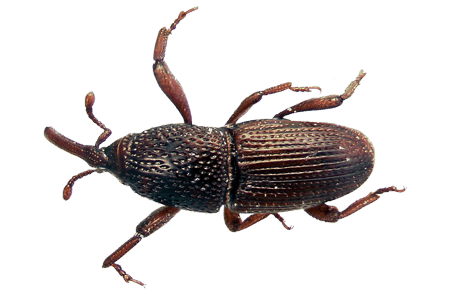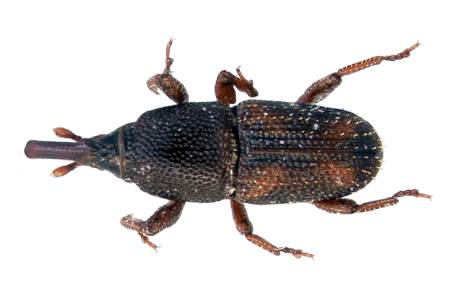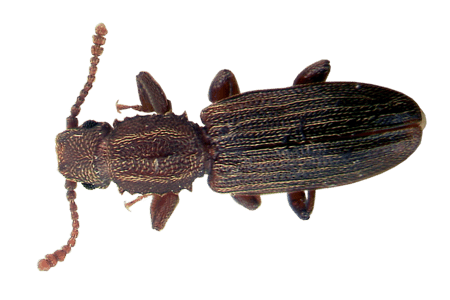Active Seasons




Beetle Appearance and Size Facts
Beetles are some of the most commonly encountered pests in the world. In fact, they make up around 40 percent of all insects and 30 percent of all animals on Earth. Naturally, this means they’re bound to end up in your home or business from time to time. While beetles of Florida are mostly harmless to humans, they can contaminate food and cause other damage to your property in addition to being flat-out gross.
Some recognizable characteristics of beetles include:
- Six legs. Like all insects, beetles have six legs.
- Up to over seven inches long. There are thousands of species, with huge diversity in appearance, which can be as small as under an inch, with some as large as several inches.
- Antennae and wings. Beetles have three distinct body parts, like all insects, and two pairs of wings and two antennae on their heads.
- A wide variety of colors. There are beetles in virtually every color, with the most common being green, brown, and black.
We offer beetle control in the following locations and their surrounding areas:
- Beetle Control in West Palm Beach, FL
- Beetle Control in Port St. Lucie, FL
- Beetle Control in Fort Pierce, FL
- Beetle Control in Vero Beach, FL
- Beetle Control in Palm Beach Gardens, FL

Behavior and Habitat of Beetles
Outside of the oceans and polar ice caps, beetles can be found everywhere on the planet. They’re an incredibly diverse insect, as they have thousands of different species. The most common home infesting beetles are known as “stored product pests,” as they feed on many different things including rice, pasta, cereal, wheat, yeast, dog food, cat food, bird seed, flour, crackers, and more. Several Florida beetles also pose a threat to agriculture, as they can feast on important crops and infest dried goods.
While not directly harmful to humans, beetles also pose a threat to you as a business or homeowner. Some beetle species are wood infesting, such as the powderpost beetle, old house borer, or anobiid. These beetles can be found infesting attics, flooring, furniture, wall studs, cabinetry, doorframes, window frames, baseboards, crawl spaces, and more. Some beetle species, such as the carpet beetle, can also feed on the fibers in your carpets, upholstery, and clothing. For business owners, the sight of beetles can hurt their reputations, not to mention inventory loss and the potential shutdown of operations for fumigation or pest control measures.

Signs of Infestation of Beetles
One of the most common places to find beetles in Florida is near the entrances of your home, cracks in the foundation, or other narrow crevices or openings where they can hide out. They’re also drawn to basements, garages, bathrooms, and just about any other dark and moisture-rich area.
The easiest way to spot beetles in your home is to keep an eye out, as they often end up within view. Some more serious signs of beetles include damage to upholstery or carpet, holes in clothing, shed skin, and fecal droppings. When some beetle larvae shed their skin, they can also cause skin irritation in humans in some cases along with potential allergic reactions.

Tips for Prevention of Beetles
Generally speaking, you can help prevent beetles from getting inside by ensuring your home or workplace has no easy points of entry. Check for cracks in the pavement, gaps in the foundation, unsealed windows or doors, and more. Additionally, make sure any landscaping or other outdoor vegetation is far from your building’s walls, free of grubs or dead branches, and generally well kept. However, because there are so many different types of beetles, the treatment can vary between beetle species. That is why it is important to get a positive identification and inspection from a professional pest control company.
Getting Rid of Beetles
If you believe you have a beetle infestation in your home or workplace, it’s important not to ignore it. Your best bet is to invest in professional residential pest control or commercial pest control treatments, as trained Florida beetle control experts are able to fight back in a much more effective and efficient way than any DIY beetle control methods, especially if identification from the homeowner is incorrect.
Effective Beetle Control Solutions
Don’t let issues with beetles or other common household pests cause you more stress than they’re worth. Bring in the pros at Hulett Environmental Services for expert beetle control in Florida. With over 50 years of experience providing top-notch pest control in south Florida, our friendly team of technicians is trained to battle beetles and other pest problems and restore your peace of mind as soon as possible.
Ready to create a pest-free home? Request your free inspection or give us a call today to learn more about beetle control in south Florida!



